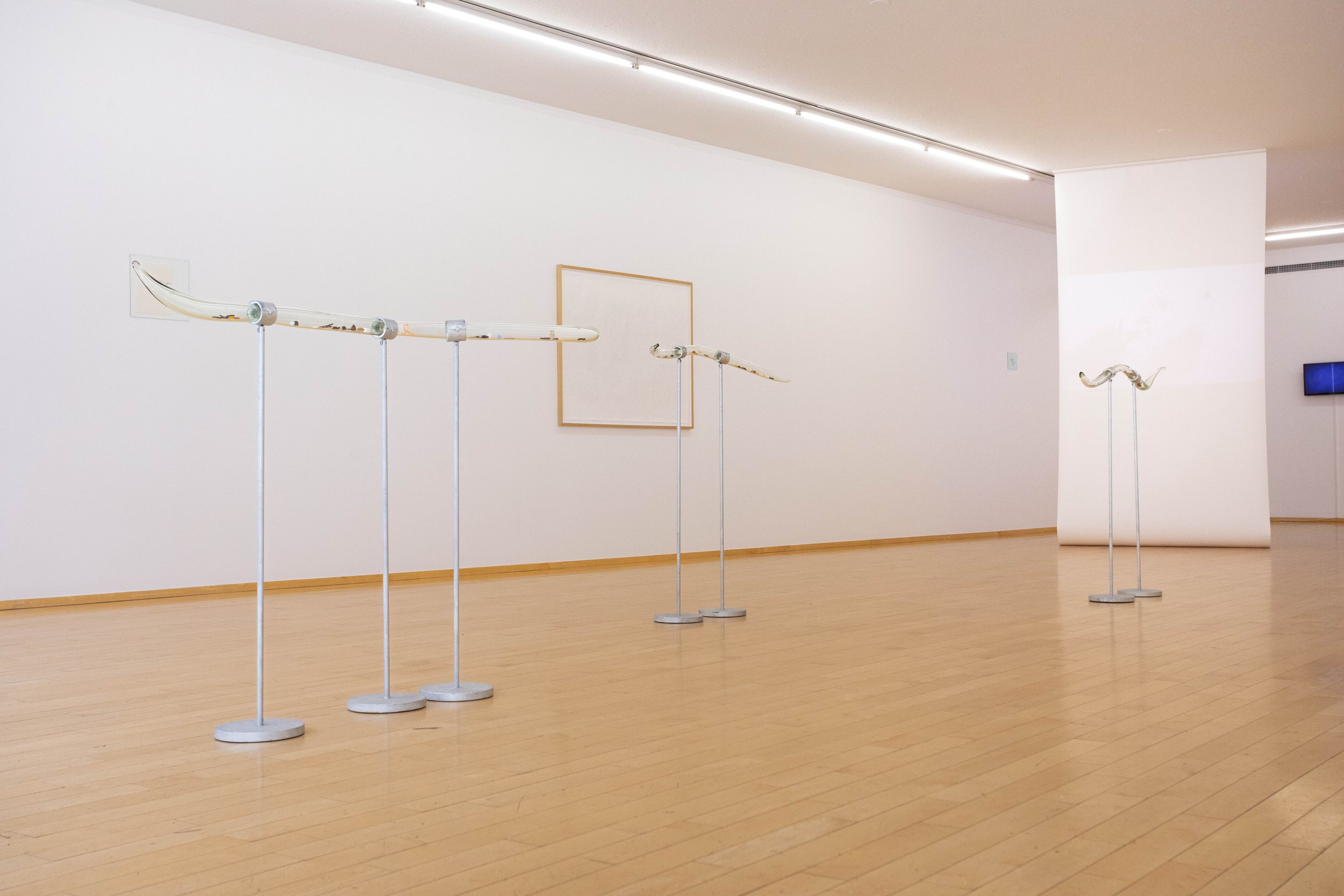HIKANDI LÍNA (HESITANT LINE)
Solo show Hafnarborg Museum 10.06.2023 - 30.09.2023
Becoming a line was catastrophic, but it was, still more unexpectedly (if that’s possible), prodigious. All of myself had to pass through that line. And through its horrible joltings. Metaphysics taken over by mechanics. Forced through the same path, myself, my thoughts, and the vibration.*
Henri Michaux’s approach to discovering a universal language began with his conviction that it was something that he could unfold out of his own body in a shared vocabulary that, through the act of drawing, would reveal a fundamental sign-making capability available to all. His first resources for the universal body making the gesture of script was in prehistoric cave markings which were believed to hold the basis of writing and drawing. But that was Michaux writing about drawing under the influence of mescaline in Paris in the 1950s.
Elísabet Brynhildardóttir’s exploration of the agency and embodiment of the drawn line is parallel but wholly different in approach. Michaux was looking for a universal language through drawing, one that combined language and gesture, thought and embodiment, but this was embarked upon as a bystander to his consciousness, a witness leaving a citizen science report for the populace, himself as Other.
Elísabet’s approach also combines language and gesture, thought and embodiment, but is practised in an open and imaginal intimacy with the living line. It is relational to the line and in dialogue with the qualities of language inherent in the line. The hand blown glass pieces encapsulate the idea of being able to peer inside a line and witness its intricate composition—every experience, practice, influence, and keen observation.
This living line and its closeness to the rhythm of real time is emphasised, for example, in the sketchbooks scattered over the gallery. The sketch is often done in real time as a response to events, an immediate act which is about a dialogue with the present that has less to do with an idea of perfect representation. If drawing is a tool to mirror experiences and feelings, as Elísabet says, then it is also a tool for understanding them, as their likeness is in their changeability, not their capture.
The line itself has agency and is described on its own terms by the artist: hesitating line, attempted line, efficient line, indecisive line, favourite line and unasked-for line.
The lines encompass the act of tracing, the making of marks, and the natural impulse to replicate reality. Drawing, preceding the act of writing, serves as an initial visual response to the world, offering a means to project thoughts, emotions, and imagination onto a tangible medium. Through a diverse collection of artworks, viewers are invited to immerse themselves in the unedited, intimate, and deeply personal realm of drawing in its inexactitude. The drawing, Ég vildi gera rétt does not fit into the gallery space itself, but hangs with its enormous size along the entrance wall in a prescient exploration of the territory of the line as vast and right here; exact and hesitant; infinitely reproducible and intimately singular.
Erin Honeycutt



































